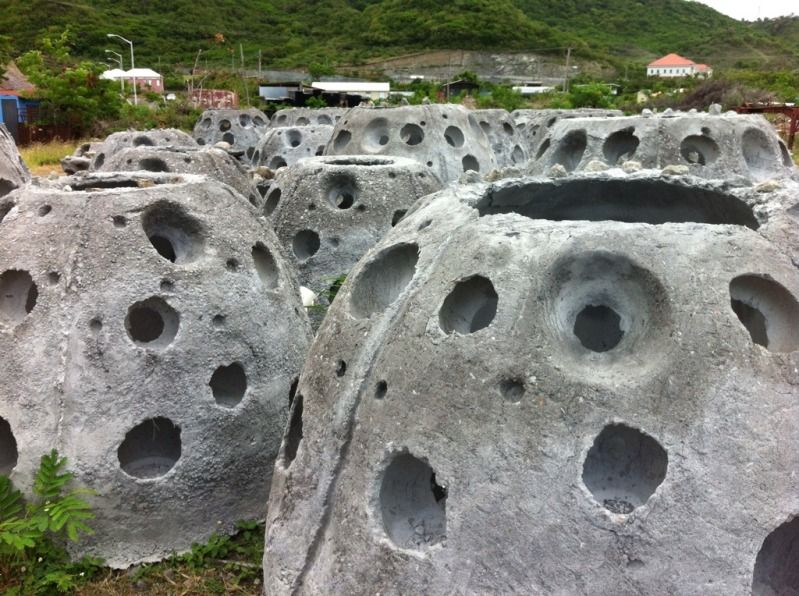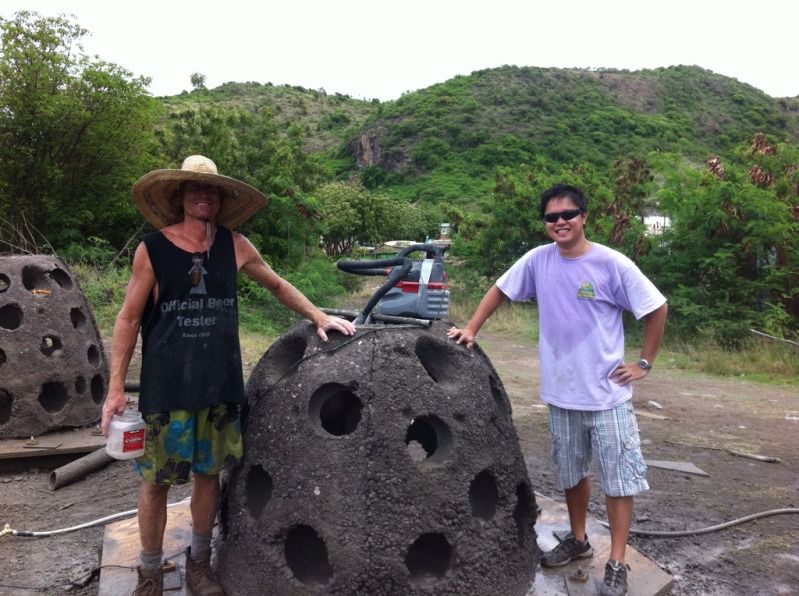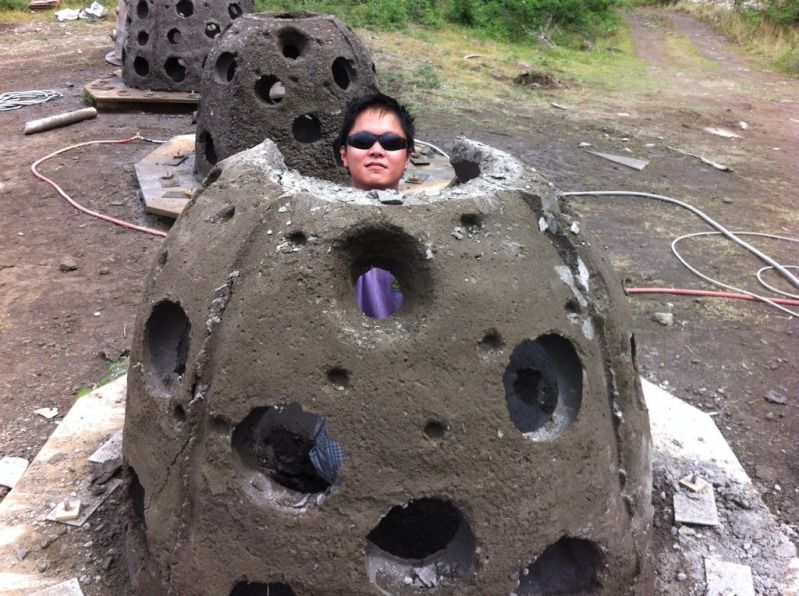Freshly made reef balls.
And on Saturday, we turned up at 8 in the morning ready for some manual labour. With Tom & I not having wielded many a hammer in our lives so far, we embarked on a good start by taking and hammering apart the moulds that were filled in the day before. Each mould consists of three or four panels, and on each panel are small inflatable 'buoys' that give each reef ball it's signature 'cheese' layout. These holes within the structure will allow for water filtration and movement which will aid in coral growth. It also, of course, enhances the 'playground' effect for fish when it is finally put in the sea.
We then proceeded to reset and build the moulds again, for a marine-specific concrete mix to be poured in eventually. Each mould has a central inflatable bladder that gives the reef ball a hollow interior, and this bladder along with the smaller buoys are inflated before the concrete mix is poured in.
Andy & I with a smaller reef ball.
Looking very 'wieldy'.
Reef ball hatching.
The Montserrat Reef Project has been working with the Reef Ball Foundation, a non-profit organisation that specialises in artificial reef technology, reef propagation and public education & outreach; these fibreglass moulds were specially designed and built by the foundation. This project itself has been propelled by the dedication of Emmy & Andrew, the ocean-loving owners of Scuba Montserrat.
I certainly was glad to break out the tools (and muscles, of course) for this worthwhile cause, as well as contribute towards some sort of direct investment of Montserrat's marine future. And given how the corals will take about a year to propagate to reefs, from the time of transplantation, I will just have to come back in a year's time for a dive to marvel at the fruition of this project!




No comments:
Post a Comment